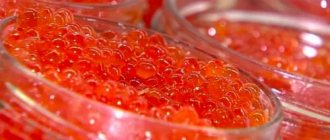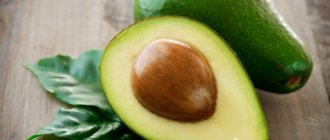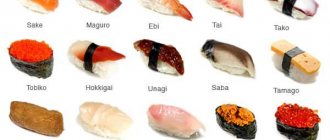Posted on Nov 15th, 2022,
by Chief Milkman
Categories:
- Cooking tips
Red caviar is a holiday product and an expensive pleasure. And it will be a great shame if, due to ignorance of storage rules, this delicacy spoils. We offer some tips on how to store the delicacy at home so that the quality of the purchased caviar does not suffer, and the holiday still takes place.
Where is it permissible to store red caviar at home?
The refrigerator is not only the best, but also the only place to store caviar. The fact is that this is a very delicate product, and in order to preserve it, several conditions must be observed, the most important of which is the required temperature regime.
GOST provides for the storage of red caviar at temperatures from -4 to -6°C. Under such ideal conditions, you don’t have to worry about the safety of this food treasure for a whole year. Although experts say that the faster it is eaten, the tastier and healthier it is.
The refrigerator, in fact, does not require such fine tuning of the temperature regime. In the general chamber it stays within +2...+5°C, in the freezer – -18...-24°C. But here the temperature is at least fixed, so the refrigerator is seen as a reasonable compromise between ideal conditions and accessible reality.
Important! Neither a pantry, nor a cellar, nor a cold window sill are suitable as spawn storage: fine temperature regulation in these places is impossible in principle. For some time, you can place closed factory-made jars here - but not for long.
The place to store red caviar in the refrigerator is under the back wall on the bottom shelf.
Identifying expired caviar
- When purchasing a product in a metal can, pay attention to what is written on the packaging. A real high-quality product always indicates the date of manufacture, expiration date and temperature conditions. In this case, it would be useful to check whether sellers comply with the standards specified by the manufacturer.
- The type of jar is of great importance. If the package is wrinkled, dirty, or bulging, it may have been transported or stored improperly, so it's safer to shop elsewhere.
- When purchasing a glass jar, you can see what is inside. The eggs must be whole and uniform in color. The jar should not contain plaque, water or a large amount of other unknown liquid.
- Choosing loose products is easier than others, because you can try such a product before purchasing. The eggs should not have defects or an unpleasant odor; when packaging, they should easily fall one by one, and not in a large sticky lump. There cannot be any unnecessary items in the container; the spoon for packaging must be removed. A bitter taste indicates poor quality, the only exception being sockeye salmon products.
- It is worth making a purchase in specialized and trusted stores. The product cannot be in a bucket or box somewhere under the counter. If you have any doubts about the quality of your purchase when choosing, you shouldn’t make it.
Finnish caviar, for example, the disas brand, is considered to be the highest quality product. These products are always fresh, natural, without preservatives or dyes. The most popular among the species of disas are pink salmon and trout.
How is it recommended to store red caviar in a tin?
Unopened factory-produced caviar can last in the refrigerator for no more than a year, but taking into account the expiration date indicated on the lid. In fact, you need to look at the production date initially, during the purchasing process - not all sellers are equally conscientious. There is no need to store the packaged product in the freezer.
Opened packaging will last for about 2 weeks if stored properly. If the jar is glass, it should be covered tightly. It is better to transfer caviar from an open tin into a plastic container or glass container of such a size that it can be filled to the top. The less eggs are in contact with air, the longer they are stored. Pre-selected dishes are doused with boiling water. If this is not possible, but the delicacy has a clear prospect of being eaten in the foreseeable future, you need to find a lid that fits the size or cover the top with cling film. In this case, the caviar will remain intact for several days.
It is not worth pouring vegetable oil on top of factory caviar. That’s why it’s packaged in such tiny cans so that it doesn’t have time to spoil.
How to transport the salty delicacy?
When extracting red caviar, it is important to follow not only the rules for its production, but also for transportation, as well as for future storage. Unprocessed salmon product has a relatively short shelf life. Therefore, immediately after extraction, it is treated with solutions of table salt. The presence of such processing does not guarantee high-quality storage.
To ensure that the eggs do not spoil and reach the consumer safely, it is necessary to adhere to the established temperature conditions. This rule applies to all stages of production. You can transport prepared caviar in barrels, buckets, containers, or in individual packaging if we are talking about delivering ready-made jars to the point of sale.
In all cases, transportation vehicles must be equipped with refrigerators in which the required temperature is maintained throughout the entire route.
Permissible temperature
When transporting and storing salmon products, the temperature must be maintained within the range from minus 4°C to minus 6°C .
Important! In retail stores, different temperature indicators are set - from minus 2°C to minus 4°C. The same temperature indicators are for home storage in packaged form.
The requirements established by GOST must be observed at all stages of production, transportation and storage. If the product is exposed to changes in temperature, it may become damaged, resulting in spoilage.
A decrease in these indicators leads to freezing, and an increase leads to rotting . In both cases, the appearance of the eggs deteriorates. They become cloudy, viscous, watery, and foreign odors and tastes appear.
Best before date
The shelf life of red caviar directly depends on the container in which it was sold. The weighed product is more susceptible to spoilage, and therefore is stored very little. When calculating the timing for a weighted product, it is taken into account when the caviar was produced. In fact, the countdown begins from this moment, and not from the day of canning, as with a packaged delicacy.
If caviar is packaged from a barrel, then the shelf life is established from the moment of packaging of this container , and not from the day of packaging in the jar.
The shelf life also depends on the type of packaging:
- can;
- plastic;
- glass.
The duration of preservation of taste and technical characteristics is determined by the presence or absence of a preservative:
- Without preservatives, when treated with saline solution, the delicacy can be stored for no more than 4 months.
- Eggs treated with Varex-2 retain their properties for up to 12 months.
The storage time of the salmon product is determined by the storage conditions and methods. Canned caviar has the longest shelf life . Once opened, the stated time limits do not apply.
In a tin can
Red caviar treated with preservatives is packaged in tin cans. A “live” product, which contains only table salt, is never packaged in tin. Salmon eggs in a tin can can be stored for no more than a year from the date of packaging. The specified period is relevant only with proper storage:
- In the store, the jars are placed on cooling shelves with temperatures ranging from minus 2°C to minus 4°C.
- At home , from plus 3°C to minus 3°C.
Reference . The opened product must be placed in glass for subsequent proper storage.
In plastic
Plastic is the worst material for long-term storage, which results in reduced shelf life. Salmon delicacy packaged in plastic containers can be stored for no more than 6 months. The maximum period is achieved by observing a number of rules :
- Caviar is processed with table salt and preservatives.
- Plastic containers are processed in accordance with all sanitary standards.
- The container is sealed.
Once the container has been opened, the product can be stored for no more than 4 weeks , and then only if a number of rules are observed.
Plastic containers are processed before packaging according to the following scheme:
- The container is washed using chemical-free products.
- Clean containers are sterilized in a cooled saline solution for five minutes. To prepare it, you will need to boil water and dissolve salt in it in a ratio of 4 tablespoons per 1 liter of liquid.
- The containers are dried and lubricated inside with sunflower oil.
Sealing is achieved by tightly packing the eggs . There should be no air bubbles left between them.
In glass
Glass is the best material for storing any products, including salmon caviar. Glass containers are inert; they do not enter into any chemical reactions, which means they do not affect the characteristics of the product in any way.
Glass packaging allows:
- Preserve the organoleptic, physical and chemical properties of the product.
- Pack caviar without preservatives.
- Determine the quality of a delicacy by its appearance even before purchasing it.
Attention! Shelf life in glass ranges from 4 to 12 months.
Salmon caviar purchased in another package must be placed in a glass container after opening. This will preserve its taste and aroma throughout the entire shelf life.
Features of storing red caviar in plastic containers
Plastic containers are very convenient for storing caviar, as you can find containers of any size, even the smallest. It is also easy to choose containers with thick plastic lids that provide an airtight seal.
The container is sterilized with salted boiling water and allowed to dry. Salt in this case:
- acts as a weak preservative;
- helps preserve the taste of the delicacy.
The product is transferred to the container so that it is completely filled. The air is unsterile, and caviar is a fertile environment for the proliferation of bad microorganisms. If the lid is missing, cling film comes to the rescue again. Plastic containers are stored in the common chamber of the refrigerator.
Regulatory and technical base
Let's consider what requirements for salmon caviar are set by national standards.
Technical standards
It should be noted right away that granular caviar is divided into categories of first and second grade.
In addition to the mandatory requirements: clean and intact eggs and uniform color, there are permissible exceptions. First grade:
- damaged eggs - a small amount;
- elastic, moistened or dry surface, eggs are easily separated;
- no foreign odors;
- a slight bitter taste is possible.
Second grade:
- It is permissible to mix caviar of different types of fish, which gives a heterogeneous consistency;
- possible broken eggs and pieces of film;
- The viscosity of the composition is allowed, but the pronounced granular structure must be preserved.
- Possible bitter or pungent aftertaste.
How to store caviar bought by weight
Weighed “red gold” must be transferred to a sterilized container (or containers) in such a way that what will be served is eaten immediately, and the rest is stored under a lid. It is worth remembering that weight caviar has a shorter shelf life in any case than factory-made caviar.
The container is sterilized with salted boiling water, the caviar is transferred into a dried container or jar, carefully compacting the eggs (the less air, the better). If you are not sure about the tightness or the appropriate size of the dishes, pour a very small amount of vegetable oil onto the compacted red caviar. Some people recommend using olive oil for these purposes, while others recommend using refined, odorless and tasteless oil. This creates a thin film that protects the product from air penetration.
Is it possible to freeze black caviar?
It is not advisable to store black caviar in the freezer.
This will cause the eggs to burst, after which they will stick to each other, forming a single mass that will scare away guests with its appearance. The beneficial properties of this product also disappear when frozen, so if it needs to be placed in the freezer, this must be done while observing a number of rules.
- The caviar is distributed in small portions into plastic containers,
- Fill it to the top with vegetable oil,
- Cover tightly with lids.
The day before consumption, the container with caviar is moved to the refrigerator shelf. Then its structure, taste and beneficial qualities will be preserved to the maximum extent possible.
Principles for proper storage of red caviar salted at home
The storage method largely depends on the salting method. The less time it takes to salt caviar, the more carefully it must be packaged after that (or eaten faster).
Storage is similar to that used for loose products. You need to sterilize a suitable container, fill it with red caviar “under the lid” and put it in the refrigerator. By the way, if you have a large-sized product, it would be useful to attach a sticker with the date to the jar or container. This will remind you of the expiration date.
Necessary containers and their preparation
The most suitable container for storing red caviar is a glass jar. It is not subject to corrosion and allows you to evaluate the quality of the contents. In addition, glass containers can be reused many times.
However, before laying a perishable delicacy, it must be properly prepared:
The container is thoroughly washed with soda, rinsed in running water, and dried.- Next, the jar is sterilized using steam, in the oven or microwave.
- Brine is prepared separately and used to wash glass containers.
- The lids are also thoroughly washed and boiled for 5–7 minutes.
How and how long can you store red caviar in the freezer?
The delicacy will keep in the freezer for up to a year, after which it still needs to be consumed: longer storage does not have the best effect on the taste.
Important! You can freeze and thaw caviar only once. If you repeat the process, the beautiful mass of sparkling elastic eggs will turn into a shapeless and almost tasteless mess.
You need to freeze them in small plastic containers, first putting them in the general section for a day, and then moving them to the freezer. When you need to defrost caviar, you need to take out only the amount that will be used and leave it again for a day in a common chamber on the bottom shelf.
How long does it keep opened in the refrigerator?
It’s not for nothing that caviar is packaged in very small jars . Packaging can hold from 60 grams and above, but the most common packaging is considered to be from 95 to 140 grams. Such jars do not require long-term storage after opening. In addition, most home refrigerators do not have an area for optimal storage of delicacies.
In the food compartment the temperature is higher than the established requirements and averages from plus 2°C to plus 5°C. In the freezer – from minus 15°C to minus 24°C. For this reason, it is recommended to eat an opened jar as quickly as possible, especially since the properties of the product will be lost every day.
The maximum shelf life of opened packaging is 14 days , provided that the optimum temperature is maintained from minus 2°C to minus 4°C.
Ways to extend the shelf life of red caviar
You want to preserve a delicate product for as long as possible. In the case of red caviar, this period is no more than a week (if we are not talking about preservation).
- Storage in a saline-treated container will provide a few extra days of good quality.
- Caviar soaked in a small amount of vegetable oil will last a week longer.
- As a last resort, you can wash the eggs with a cool saline solution and put them in a sterilized container - but this will only give you 1-2 extra days, after which you urgently need to come up with a reason to eat sandwiches with caviar.
GOST requirements
Technical features relating to the production, packaging, acceptance and sampling of valuable fish caviar are regulated by two regulations:
- GOST 18173-2004 - canned granular salmon caviar;
- GOST R 55486-2013 - sturgeon caviar.
It contains mandatory requirements for the mass fraction of ingredients and the content of preservatives, but this information concerns mainly the manufacturers of the product. In terms of storage, the main provisions are noted here:
- caviar can be stored for 4 months without adding preservatives;
- The shelf life of products with added preservatives increases to 12 months.
In both cases, the recommended storage temperature varies within -4/-6 degrees, shelf life is determined from the moment the product is manufactured. In addition, paragraph 7.2.2 indicates that the shelf life is indicated by the manufacturer, but within generally accepted standards.
Download for viewing and printing:
GOST 18173-2004 “Granular salmon caviar in jars. Technical specifications"
GOST R 55486-2013 “Granular caviar of sturgeon fish. Technical specifications"
How to determine if caviar has spoiled during storage
The surest sign is a foul odor. Good quality caviar gives off a pleasant faint sea aroma, while spoiled caviar gives off the smell of rotten fish. Other odors that should alert you: rancid fat, oxidized metal.
There should be no artificial flavors or unrefined vegetable oils. Sometimes sellers try to hide the true “age” of caviar in this way, selling it by weight for a long time from open large containers.
Visually, the eggs change color (darken) and become covered with a mucous coating. In severe cases, areas with mold and rot are visible to the naked eye in the egg mass.
If there are no visible signs, expired caviar will be indicated by the presence of bitterness in the taste. A slight bitterness is permissible only in sockeye salmon caviar, and even then it gives a special delicious taste. And a spoiled product is unconditionally bitter. This indicates that fish oil was in contact with air for a long time (in other words, storage rules were not followed) and oxidized, which is why the taste and smell are the same.
What regulations govern the conditions of production, storage and sale?
Salmon or red caviar is obtained and preserved according to the same rules . The conditions under which the product is produced, stored and sold are specified in GOST 31794-2012 “Granular salmon caviar”. This regulatory document covers the field of delicacy production in general. It sets out rules for product that is stored in barrels and sold by weight.
Most consumers purchase caviar in canned form. Small glass or tin jars can be found on the shelves of almost all grocery stores. When preserving salmon products, the actions of the manufacturer are regulated by GOST 18173-2004.
Important! Red caviar is not always packaged from a fresh, chilled product. According to legal regulations, it can be frozen for longer storage. The freezing and storage process is described in GOST 31793-2012.
All regulatory legal acts must stipulate requirements for technical production conditions, rules:
- transportation;
- conservation;
- packaging;
- markings;
- storage, etc.
Video about how to preserve the freshness of red caviar for a long time
Proven techniques that will help prepare pink salmon and other salmon caviar for storage. Ways to preserve the delicacy at home without losing its quality.
If you have taken note of these simple but very useful tips, all that remains is to wish you a bon appetit and more joyful taste sensations!
Related posts:
- Red caviar
- storage
Chief milkman
I make healthy food tasty and vice versa.
Can it be frozen?
Freezing allows you to extend the shelf life of many foods. When buying salmon caviar, a natural question arises - can it be frozen? There is no definite answer, as there are many nuances.
If we talk about GOSTs, they prohibit such actions, due to the fact that double freezing of the product leads to the loss of its properties and qualities. It should be taken into account that when the product is extracted, it is subjected to shock freezing in order to be delivered to the packaging site. Thus, all caviar must be frozen once.
In everyday life, it often happens that salmon products are frozen, and even quite successfully. But before you begin such actions, you should study the rules for freezing this delicacy and be prepared for the fact that when defrosting, the taste and appearance may be lost.
No one knows for sure whether the product was subjected to secondary frosts on the way to the counter, and therefore there are no guarantees of its quality preservation.
The freshness of food is very important for the consumer; when purchasing goods in a supermarket, the buyer usually pays attention to the expiration date and shelf life of food products. You can get detailed information on the terms and conditions of storage and shelf life of products such as meat or chicken and other minced meat, sausages and sausages, frozen dumplings, eggs, kefir, butter and cheese on our website. Red salmon caviar gives the consumer excellent taste and aroma only subject to strict adherence to the rules of production, transportation and storage
It is important for the consumer to know the established parameters and follow the storage rules established by GOST. Compliance with the standard allows you to enjoy the taste and get maximum nutritional benefits. Red salmon caviar gives the consumer excellent taste and aroma only if the rules of production, transportation and storage are strictly followed.
It is important for the consumer to know the established parameters and follow the storage rules established by GOST. Compliance with the standard allows you to enjoy the taste and get maximum nutritional benefits
Red salmon caviar gives the consumer excellent taste and aroma only if the rules of production, transportation and storage are strictly followed.
It is important for the consumer to know the established parameters and follow the storage rules established by GOST. Compliance with the standard allows you to enjoy the taste and get maximum nutritional benefits
Choosing the right container for storing loose delicacies
Let's consider which jars and boxes are suitable for long-term storage of the delicacy.
Plastic containers
You can choose plastic jars and boxes with or without a tight lid - in this case, the container is covered with cling film, this storage option is allowed. It is recommended to pay attention to the packaging labeling: some types of plastic are not suitable for heating and freezing. There is also a material that is absolutely not suitable for storing food.
When examining the appearance of the container, pay attention to the PVC icon (PVC-polyvinyl chloride) or the number 3 in the triangle at the bottom of the package - these markers indicate toxicity and unsuitability for storing food.
Food grade plastic is marked with letters:
- PE (PE) - polyethylene;
- PETF (PET) or PET (PET) - polyethylene terephthalate;
- PP (PP) - polypropylene;
- PS (PS) - polystyrene (its code is number 6);
- Safety is confirmed by the image of a plate and fork, as well as the numbers 5 and 1.
Glass jar
The jar is closed with a plastic or screw lid, or a lid that is attached to the jar - it is attached to the container with metal holders and has a rubber seal for special tightness. These lids are locked.
Glass containers are considered the most environmentally friendly and safe for storing delicacies . Glass does not oxidize the product, does not absorb or release odors to food.
Article on the topic: How long should you put mi band 2 in the refrigerator to drain the battery?
The downside of this type of container is its fragility, so you need to handle it carefully.
Adviсe
Red caviar can spoil very quickly if you do not provide it with the correct storage conditions. To ensure that one of the main holiday treats retains its taste and benefits, take note of the following recommendations:
- You only need to remove caviar from the jar with a clean, dry spoon.
- It is important that no water gets into the container with the product.
- When purchasing, you need to pay attention to the integrity of the eggs and the amount of liquid, it should be minimal. If the eggs are whole, it means they were stored immediately after the fish was caught. If they are damaged, most likely it took at least three to five days to transport them to the factory.
- Purchasing in tin cans can only be done with full confidence in the manufacturer and the seller.
- If plastic jars are used for storage, then only food-grade and sterile ones. Otherwise, there is a risk that the product will acquire a foreign odor.
In the East, caviar is prepared by the liter. Local residents have their own storage secret. They douse the containers prepared for canning with brine. This is the name of a very cool brine. It destroys germs better than any antiseptic.
Store red caviar correctly. And in order to once again make sure of its quality and naturalness before eating it, turn the jar upside down. If it is difficult to shake it out, then you can safely enjoy the healthy delicacy.
Prepare tartlets with caviar for the holiday and your guests will be pleased!
Storage Tricks
If you need to preserve the delicacy for a long time, then you should get a glass container with a hermetically sealed lid, since caviar is stored in the refrigerator in a plastic container for only about two weeks.
But even if you couldn’t purchase glassware, you can resort to one more trick - after filling the jar/box with the delicacy, you need to add 2-3 tablespoons of vegetable oil on top. It will displace oxygen between the eggs and also cover them with a protective film, preserving freshness for a long time. By the way, this method is an excellent solution in situations where the container was only half filled.
Caviar in a glass jar
Is it possible to eat when it's past due?
It is forbidden to consume caviar that has expired , as it may begin to rot and multiply microorganisms. Eating spoiled food can cause an allergic reaction and food poisoning.
Storing red and black caviar, as well as their selection, are quite complex processes. When choosing a product, you should ensure its freshness and quality, and during storage, comply with all prescribed conditions. Since caviar is a perishable product, it is recommended to consume it immediately after opening the package so that it does not lose its properties.
If you find an error, please select a piece of text and press Ctrl+Enter.










